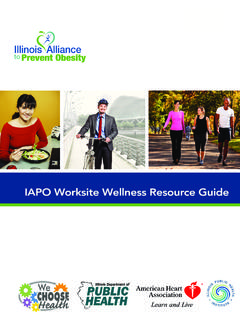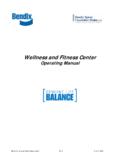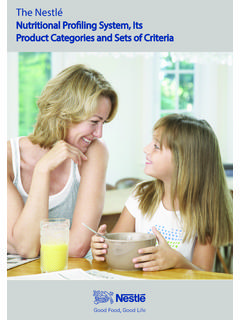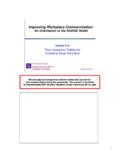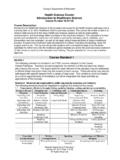Transcription of GET THE FACTS - Centers for Disease Control and Prevention
1 National center for Chronic Disease Prevention and Health Promotion Division for Heart Disease and Stroke PreventionGET THE FACTS : Sodium s Role in Processed FoodWhat Do Sodium and Processed Food Have to Do with Heart Health?Eating too much sodium can lead to increased blood pressure, which in turn contributes to heart Disease and stroke. Reducing sodium intake to recommended amounts is important to maintaining heart may surprise you to learn that more than 70% of the sodium Americans consume comes from processed and restaurant foods. Only a small amount comes from the salt shaker, either during home cooking or at the dinner Food: A DefinitionThe Food and Drug Administration defines pro-cessed food as any food other than a raw agricultural commodity and includes any raw agricultural commod-ity that has been subject to processing, such as canning, cooking, freezing, dehydration, or milling.
2 By this defi-nition, nearly all food served in restaurants and many grocery store products are considered are a few other ways to think about processed food:nA processed food is any food that has been changedfrom its original, raw a food often involves the use of addedingredients, including sodium-containing additives,which could make the product less healthy. From Scratch Versus Processed Are They Always Different?Americans use of packaged food has increased in the past 50 years. Many of the ingredients that we now use when we cook from scratch at home are processed in some processed foods at the grocery store are easy toidentify in general, anything with a Nutrition Factslabel on the package has been meals, snack foods like chips and cookies, andmost beverages have been staples as sugar, flour, chicken broth, and canned orfrozen vegetables have also been processed in some that use labels such as all natural or wholegrain are still Processed can mean many different things, but notall of these foods are bad for your health.
3 Productssuch as frozen vegetables are often still low in s why it s important to check Nutrition FACTS labelsand choose the option lower in than 70% of the sodium Americans consume comes from processed and restaurant foods not the salt THE FACTS : Sodium s Role in Processed FoodHow Much Sodium Should I Eat?The 2015 2020 Dietary Guidelines for Americans recommend that Americans consume less than 2,300 milligrams (mg) of sodium each day as part of a healthy eating So Much Food Is Processed, What Can I Do to Cut Sodium?nAt the grocery store or farmers market, purchasewhole, unprocessed foods when available, such asfresh vegetables and products can vary greatly in sodium purchasing processed foods, compare labels andchoose the option with the least amount of at home more, and use as many fresh ingredientsas back how often you eat restaurant food, whichis frequently high in nutrition information when dining out, andask your server about lower sodium eating out or in, eat less.
4 Reducing portionsizes can help limit how much salt you more at reduce sodium in home cooking, season foods with fresh herbs and spices instead of more information please contact Centers for Disease Control and Prevention1600 Clifton Road NE, Atlanta, GA 30333 Telephone: 1-800-CDC-INFO (232-4636)/TTY: 1-888-232-6348E-mail: Web: date: 10/2017










